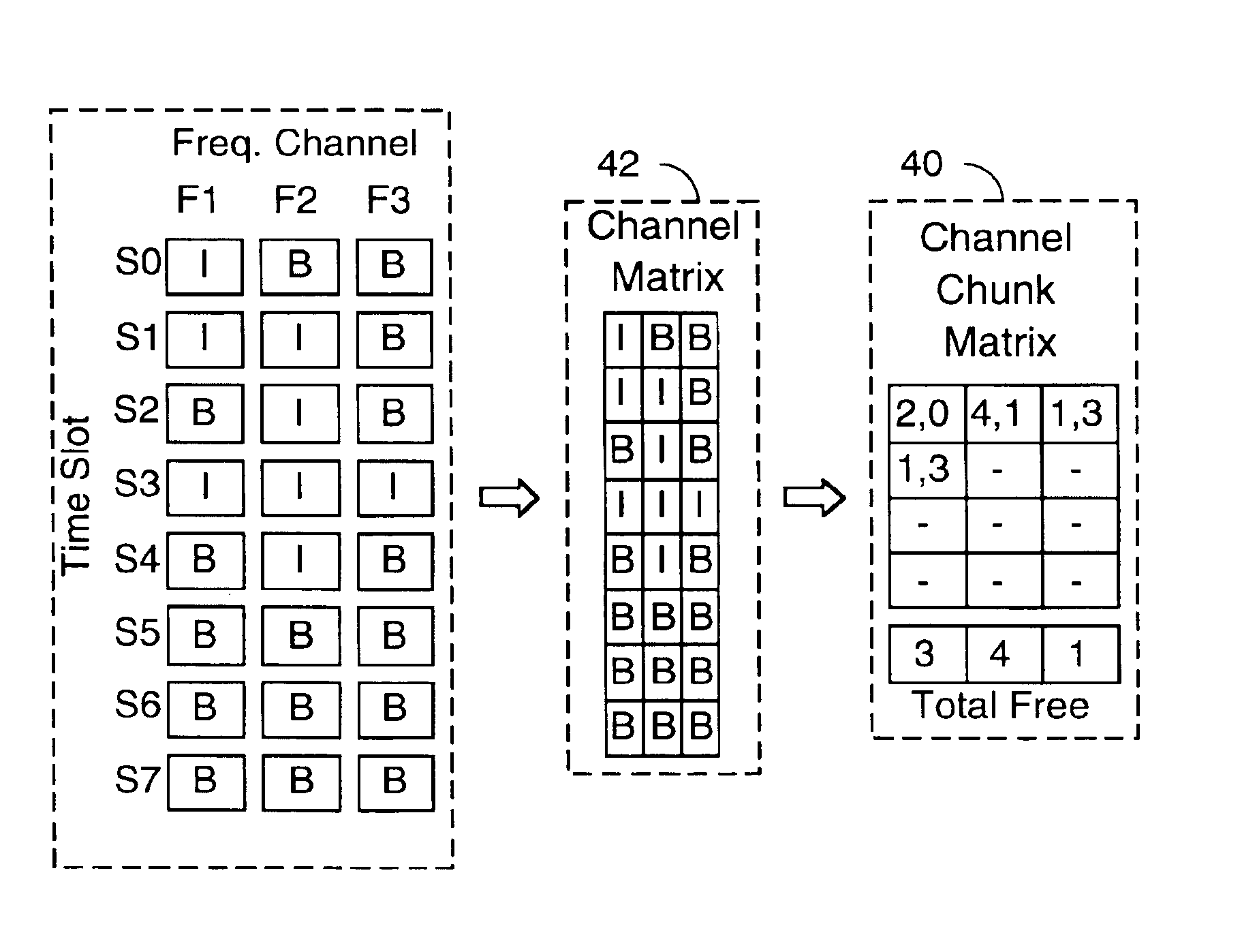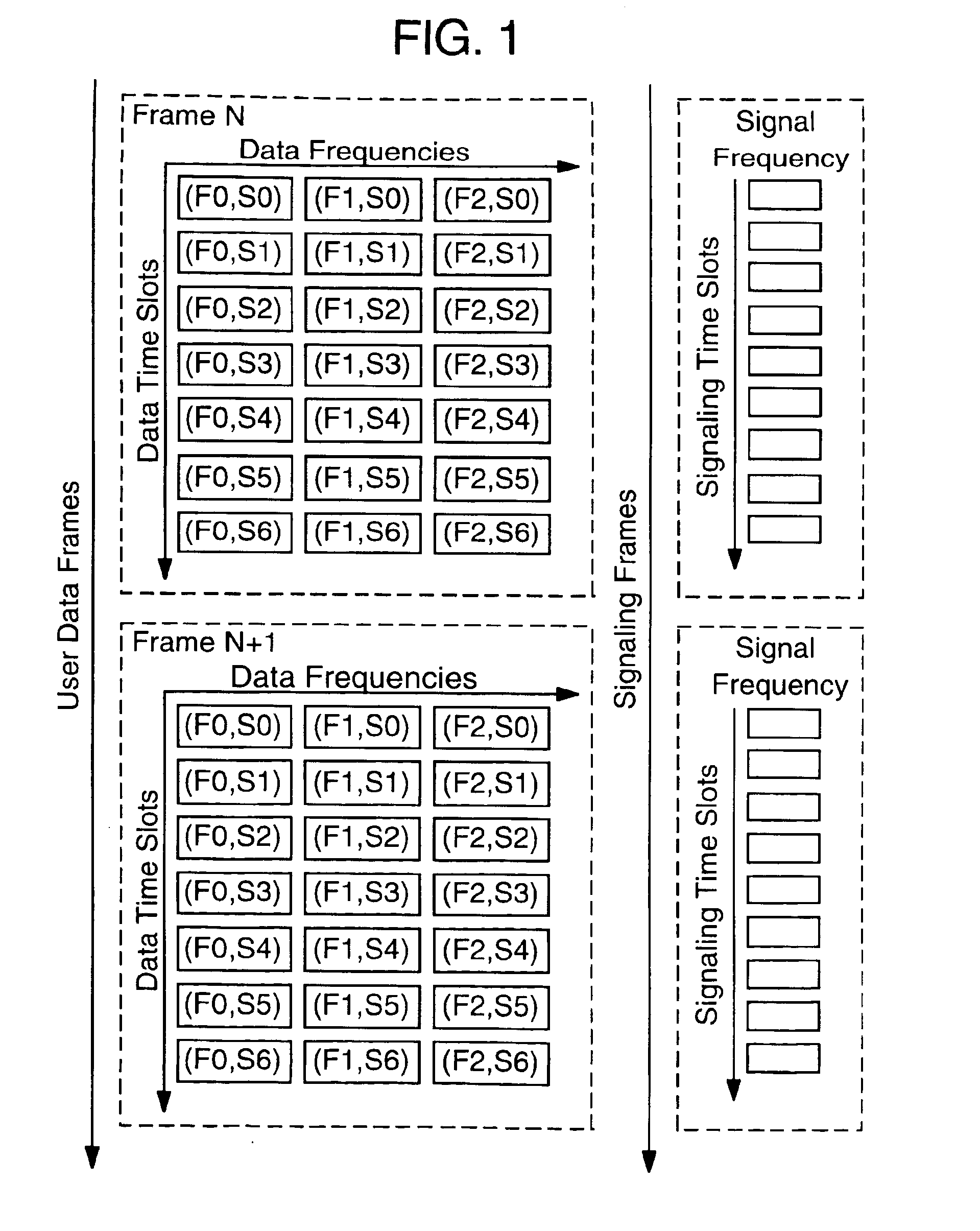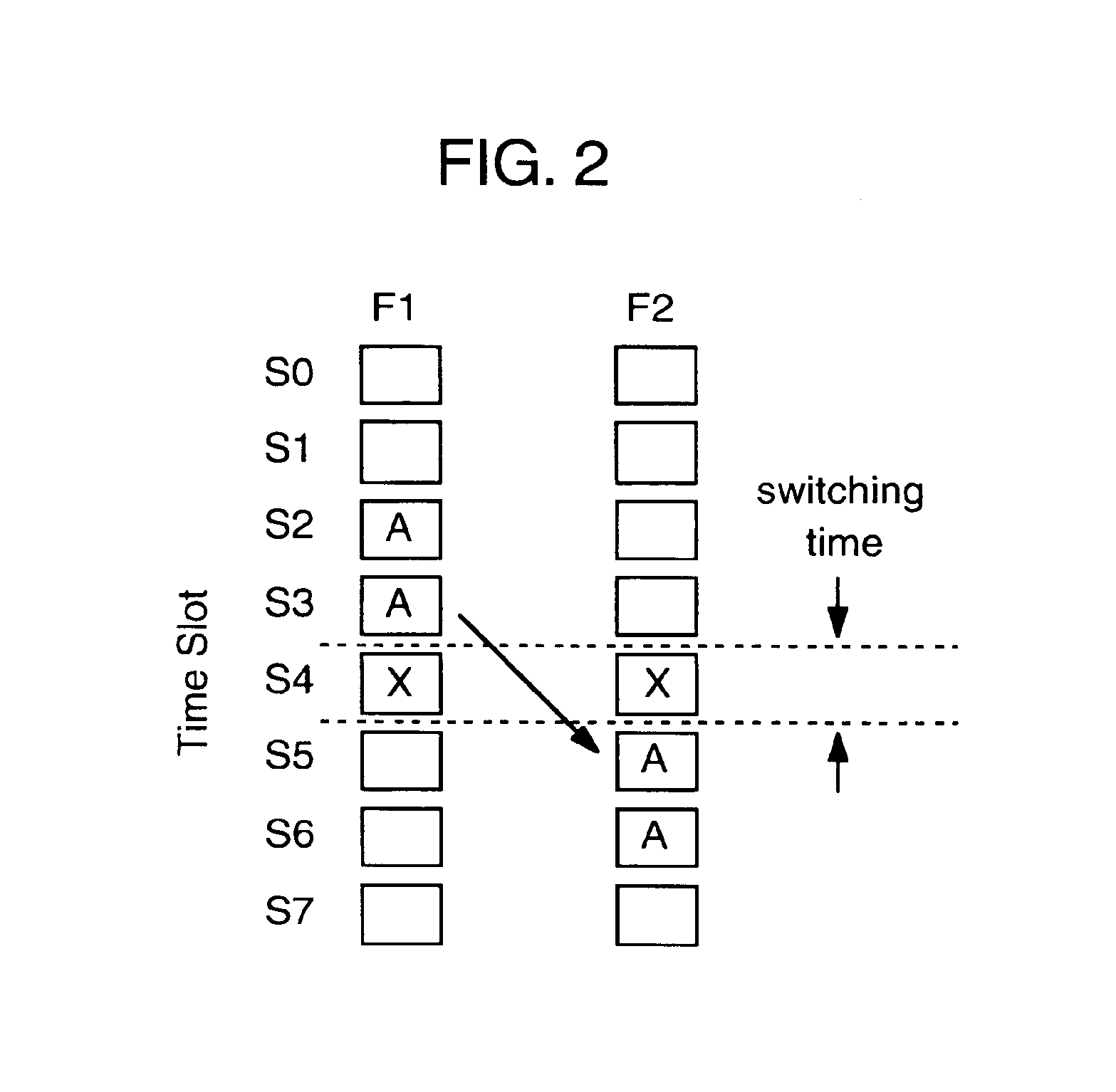Dynamic resource allocation and media access control for a wireless ATM network
a wireless atm network and resource allocation technology, applied in the field of dynamic resource allocation and media access control for wireless digital communications networks, can solve the problems of limiting the range of transmissions to campus-scale distances, data rates must be lower, and spectrum in this band is very scarce, so as to achieve the effect of reducing data rates, reducing bandwidth consumption, and reducing bandwidth consumption
- Summary
- Abstract
- Description
- Claims
- Application Information
AI Technical Summary
Benefits of technology
Problems solved by technology
Method used
Image
Examples
Embodiment Construction
[0017]The following description of a preferred embodiment of the present invention contains many details for the purposes of illustration. Those skilled in the art of the present invention will appreciate that many of these details can be altered without departing from the essential ideas of the invention. Accordingly, the scope of the invention should not be understood to be limited by the specifics in this detailed description.
[0018]Media access control is required to arbitrate access to the radio spectrum of a wireless ATM network. Resource allocation is the process of allocating network resources to wireless users. This detailed description presents a preferred embodiment of a media access control and resource allocation method referred to as dynamic resource allocating multiple access (DRAMA) for wireless ATM networks.
The Wireless ATM Network Environment
[0019]DRAMA is a dynamic resource allocation and media access control technique for a multi-tier wireless ATM network. A multi...
PUM
 Login to View More
Login to View More Abstract
Description
Claims
Application Information
 Login to View More
Login to View More - R&D
- Intellectual Property
- Life Sciences
- Materials
- Tech Scout
- Unparalleled Data Quality
- Higher Quality Content
- 60% Fewer Hallucinations
Browse by: Latest US Patents, China's latest patents, Technical Efficacy Thesaurus, Application Domain, Technology Topic, Popular Technical Reports.
© 2025 PatSnap. All rights reserved.Legal|Privacy policy|Modern Slavery Act Transparency Statement|Sitemap|About US| Contact US: help@patsnap.com



